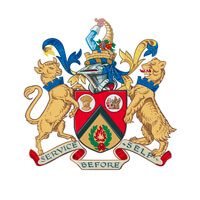fees waived
Graphic Design, BA (Hons)
University College Birmingham, United Kingdom
Costs
food & rent S$17.1K / year
Entry requirements
Scholarships
Limited quantity
Information
Code
Intakes
Website (External)
Programmes
Information
Duration
2028
This graphic design degree, developed in collaboration with industry, equips students with essential skills in typography, photography, web development, digital design, and visual communication, while integrating AI technologies to meet future industry demands. Students use industry-standard software like Creative Cloud to explore design principles, branding, and colour theory, fostering real-world experience through collaborative projects that translate concepts into impactful designs. Graduates emerge with a strong foundation, ready for diverse careers in graphic design.Key reasons to choose this course include no exams, with assessment via practical coursework; a versatile skill set in tools like Creative Cloud; and opportunities in traditional and digital sectors. State-of-the-art facilities, such as the Digital Creative Studio, enhance learning, while industry engagement and portfolio development prepare students for roles like graphic designer or web designer. The curriculum progresses from foundational concepts to advanced topics, including placements and final-year projects, with teaching involving lectures, practical activities, and independent study.
YEAR 1 - Learners are introduced to the key theoretical concepts associated with graphic design, including visual communication and the impact of design on consumer behavior. Using industry-relevant software, techniques in image manipulation are explored, while students also develop technical skills in photography, editing and the application of artificial intelligence. YEAR 2 - The second year involves a deeper exploration of graphic design principles, all while keeping the industry at the forefront of their learning. Learners engage in digital and hand-drawn techniques for illustrative design purposes, as well as develop an understanding of brand identity and strategy. Focus will be on digital storytelling, web design, logo design, 3D technologies and collaboration to fully prepare students for employment. YEAR 3 - BA (Hons) students have the opportunity to undertake a 48-week paid placement during the third year. This real-world experience further prepare students for future employment by enabling them to apply their skills in a professional setting. YEAR 3/4 - The final year is centered around topics such as business, innovation, project and client management, enabling learners to advance their understanding of the industry and progress into a career in graphic design. Learners engage in a large-scale project to produce a portfolio tailored towards a chosen area of specialism, presenting a range of technical and transferrable skills.
A local representative of University College Birmingham in Singapore is available online to assist you with enquiries about this course.

